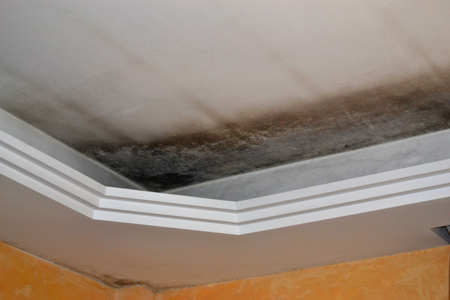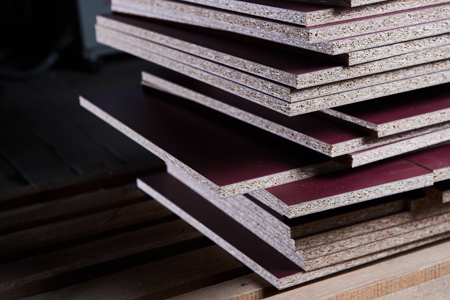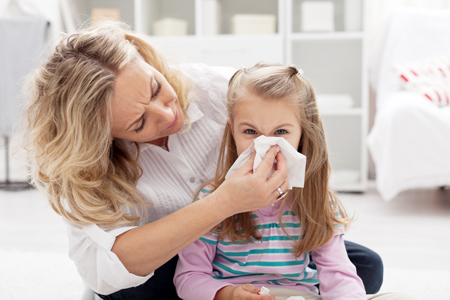Top 10 Reasons You Need To Be Aware Of Mold!
September 2016 marks the 8th annual Mold Awareness Month started by the National Indoor Mold Society:
“The purpose of National Indoor Toxic Mold Awareness Month is to inform, educate, and raise awareness about the adverse health effects due to exposure of indoor molds and mycotoxins.” (Executive Director, Letitia Peters)
According to Michael Pinto:
“The reason that mycotoxins are suspected of poisoning people is based on both science and observational connections. “Mycotoxin” is the term that scientists use for a variety of chemical compounds that are produced by fungi during their growth cycle (the official term for mycotoxins is “secondary metabolites”). The suffix toxin is found at the end of the word mycotoxin because a great number of these mold-produced chemicals have been proven to be poisonous to both insects and animals—including people.”
One of the goals of Mold B Gone is to educate consumers in the Atlanta, Georgia area about mold. We believe that every month should be mold awareness month. Since launching this site, we have had nearly 37,000 views from individuals interested in learning more about mold.
There are three key lessons you need to know about mold:
- Mycotoxins kill other things, like bacteria and viruses, so mold can continue to grow.
- Mold spores, whether dead or alive, can cause adverse health effects.
- There is no practical way to eliminate all molds and mold spores in the indoor environment; the way to control indoor mold growth is to control moisture.
Considering that some molds, like Stachybotrys chartarum and Aspergillus, produce myctoxins that cause sickness, the purpose of this article is to list and explain the top 10 reasons you need to be aware of mold.
#1 Mold Needs Less Than 2 Days To Begin Growing!
Mold requires three key ingredients to grow:
- Food: wood & wood products; paper and other paper products like cardboard and wallpaper; leather; fabric and upholstery; grout; painted walls; cement; plaster (drywall); ceiling tiles; insulation materials; and carpet.
- The ideal temperature of 41 degrees to 100 degrees Fahrenheit; and
- Moisture, the key ingredient.
In the presence of moisture, the ideal temperature, and ample food, mold will begin growing within 24 to 48 hours. This is the reason that water damage restoration is so important during a flood event!
#2 Mold Causes Chronic Sinusitis!
According to Doctors at the Mayo Clinic, David Sherris, Eugene Kern, and Jens Ponikau, chronic sinusitis is caused by a fungus and is an immune reaction:
“Medications haven’t worked for chronic sinusitis because we didn’t know what the cause of the problem was. Fungus allergy was thought to be involved in less than ten percent of cases. Our studies indicate that, in fact, fungus is likely the cause of nearly all of these problems. And it is not an allergic reaction, but an immune reaction. This is a potential breakthrough that offers great hope for the millions of people who suffer from this problem. We can now begin to treat the cause of the problem instead of the symptoms. Finally we are on the trail of a treatment that may actually work.”
This conclusion was based on a research study of 210 patients with chronic sinusitis. The Doctors collected mucus samples from the patients’ noses and discovered fungus in 96 percent of the patients. In addition, they identified 40 different kinds of fungi, averaging out to 2.7 types per patient.
Further research was done on 101 of these patients by removing nasal polyps. What they found were eosiniphils, which are which blood cells activated by the immune system in the nasal tissue of the patients. The Doctors believe that this discovery shows that the body’s immune system is sending the eosinophils to attack the fungi which is what is causing the irritation and inflammation of the membranes of the nose. For this reason, they do not believe that traditional treatments work because they do not address the root cause of the problem, fungi, which will continue to irritate the nose membranes.
#3 Your Home Is A Buffet For Mold!
Mold is nature’s recycler, it’s main purpose in our eco-system is to break down dead organic material.
In the outdoors, the relative number of spores is small enough not to cause significant harmful health effects for most people.
However, indoors, once mold begins to grow, it will cause health concerns because the spore counts will increase. Indoor air quality is a critical concern, particularly in hot and humid climates like Georgia because residents tend to stay indoors more and use their air conditioners for heat relief.
The problem with mold is the fact that most homes are made out of the material that it loves to eat. A home is an “all you can eat buffet” for mold because homes are constructed using dead organic materials: wood & wood products; paper and other paper products like cardboard and wallpaper; leather; fabric and upholstery; grout; painted walls; cement; plaster (drywall); ceiling tiles; insulation materials; and carpet.
#4 Mold Causes Asthma!
“Infants who are exposed to mold in their living environments have nearly a three times greater risk of becoming asthmatic than those who did not have extensive mold exposure in their first year of life.” (Medical Evidence that Connects Mold Exposure to Illness Keeps Piling Up)
According to Medical News Today, asthma affects 300 million people in the world and more than 22 million Americans. Although people of all ages suffer from the disease, it most often starts in childhood, currently affecting 6 million children in the US. Asthma kills about 255,000 people worldwide every year.
Asthma is a respiratory condition marked by spasms in the bronchi of the lungs, causing difficulty in breathing. According to WebMD, no one really knows what causes asthma, but what is known is that it is a chronic inflammatory disease of the airways. Trigger and causes of asthma include allergies, tobacco smoke, environmental factors, obesity, genetics, and other factors.
According to Michael Pinto, CEO, of Wonder Makers Environmental, there is mounting evidence pointing to the link between mold and asthma.
To learn more about the link between mold and asthma, including legal evidence and research studies, click here.
#5 The Core Problem With Mold Is That It Can Grow Undetected!
Most people do not realize they have a mold problem because it is hidden.
Mold can be detected through smell, visual clues, and knowledge of the building history, ie. was there a flood or indoor leak.
One of the first signs that you have a mold problem will be a “musty” or “mildewy” odor.
The next step is to determine where the smell is coming from.
The seven areas of the home that you will likely find mold includes the following: bathrooms and kitchen that have leaks under the sink; leaks behind appliances (refrigerator, dishwater, and washing machine); ceilings and walls where there are water leaks; window sills and around the windows where condensation accumulates; your basement; closets; and crawl spaces.
#6 Modern Day Building Practices Promote Mold Growth!
The rush to make quick money and high profits by real estate developers has created a disaster waiting to happen because new homes built today are more susceptible to mold growth.
- The quest to reduce energy bills means that many new homes are air tight and lack proper ventilation, conducive to mold growth.
- The season that the home was built is also a factor. For instance, if the home was built during a period when there was lots of rain and the foundation was not allowed to completely dry before installing the insulation and vapor barrier, then moisture could be trapped behind the walls.
- Building practices have changed. In the past, most homes were built with non-porous materials like plywood and timber which made it difficult for mold to penetrate the surface. Today, cost conscious builders use Orient Strand Board (OSB) and particle board which are porous and susceptible to mold growth.
According to the MOLDY documentary, at least 50 percent of homes in the United States have water damage issues caused by water line leaks, tears in moisture vapor barriers, leaky showers, condensation under eaves, and water pooling in crawl spaces. It is this water damage which causes mold to grow.
Improving building practices to prevent moisture issues is the single most effective way to prevent mold.
#7 25% of the Population Is Susceptible To Mold Illness!
According to Dr. Richie Shoemaker, physician and expert in the field of biotoxin-related illness and author of the book Surviving Mold, 1 in 4 people have a genetic pre-disposition to the mold illness, Chronic Inflammatory Response Syndrome (CIRS):
“Genes made them prime targets for an assault by their own innate immune systems….exposure to the interior environment of a Water-Damaged Building (WDB), [causes] an innate immune response that is going haywire.”
Individuals exposed to the toxins in a water damaged building suffer from chronic illness because their bodies are trying to eliminate the foreign substances that stay in the body resulting in chronic inflammation and multiple symptoms.
It is difficult to diagnose CIRS because there are 37 symptoms patients could suffer from: fatigue; weakness; aches; muscle cramps; unusual pain; ice pick pain; headache; light sensitivity; red eyes; blurred vision; tearing; sinus problems; cough; shortness of breath; abdominal pain; diarrhea; joint pain; morning stiffness; memory issues; focus/concentration issues; word recollection issues; decreased learning of new knowledge; confusion; disorientation; skin sensitivity; mood swings; appetite swings; sweats (especially night sweats); temperature regulation or dysregulation problems; excessive thirst; increased urination; static shocks; numbness; tingling; vertigo; metallic taste; and tremors.
#8 Mold Will Reduce Your Property Value!
“Mold is a serious issue. If you leave it untreated, it continues to grow. It leads to respiratory illness and it rots the wood, leaving the property valueless.” (Ian Schlake of Respond and Rebuild)
Like a parasite or cancer, mold will continue to grow as long as there is a food source, moisture, and the right temperature.
The only way to stop mold is to address the moisture source to prevent future mold growth and then remove the contaminated porous materials. Effective, long lasting mold remediation is based upon identifying the source of contamination and ensuring it is fixed.
Failing to fix the underlying causes of the mold and effectively removing the mold will lead to reduced property values caused by structural damage as the mold continues to feed on the home.
#9 Mold Remediation Can Be Costly!
As mentioned in an earlier article, the cost of mold remediation will depend on three key factors:
- How much of the area is infected with mold?
- What kind of materials are infected?
- How easy is it to access the mold?
On average, the typical household mold removal project will range from $2,000 to $6,000, but can be as high as $30,000 or more depending on the extent of contamination.
The core problem with the mold remediation industry is any contractor can offer mold removal services…so it is truly “Buyer Beware.” Because of the lack of regulation, many contractors believe they can offer mold removal services without the proper training or experience. To stay competitive, these contractors may offer “quick fix” solutions that focusing on killing the mold. However, as stated by Michael Pinto:
“Killing mold, but leaving the residue in place, is not acceptable. Since many health impacts can be triggered by exposure to both live and dead mold spores, the source and secondary contamination must be removed.” (MOLD INDOORS: Killing it is Not Enough)
Killing mold is not the answer because it is not a permanent solution to a mold problem. Professional mold removal contractors will follow an eight step process to ensure that your mold problem is fixed properly and will back up their work with a guarantee.
Don’t pinch pennies when you encounter a mold problem, the cheapest estimate may not necessarily be the best one. Do your due diligence, ask questions, get references, and most importantly avoid contractors that offer you magical solutions that involve just spraying a chemical to kill the mold dead.
#10 Mold Sickness Is A Hidden Epidemic!
According to the producers of the MOLDY documentary released earlier this year, most Physicians do not understand or have the knowledge to properly diagnose patients with mold sickness:
“Possibly every doctor in the United States is treating mold illness, and they just don’t realize it.” (Dr. Scott McMahon, MD)
Since most physicians are not trained to treat and identify mold illness, their patients continue to suffer in silence, mis-diagnosis, and a vicious cycle of numerous visits to different doctors and specialists that do not understand why they are sick.
Considering the statistics revealed in the MOLDY documentary it is not surprising that mold sickness is now considered a hidden epidemic.
- At least 45 million buildings in the United Stats have unhealthy levels of mold.
You have a 33% chance of being exposed to toxic mold when you move into a new home, apartment or office. The documentary also emphasizes the fact that many foods are contaminated with mold, including corn, peanuts, and coffee. - Approximately 28 percent of the population have genes that make them highly susceptible to mold-related health issues.
- Despite the fact that mold is a significant health concern, like lead and asbestos, there are no federal environmental protections laws.
Mold is a hidden epidemic because it makes people sick and they do not know that mold is the cause!
Got Mold Questions?
Mold B Gone has been serving the Atlanta, Georgia area since 2009. We are experts at detecting and removing mold and specialize in serving the needs of mold sensitized customers. If you have a mold question or concern, please call 678-697-6267, or send us an e-mail. Peace of mind is just a phone call away!
September Is #Mold Awareness Month, Check Out The Top 10 Reasons You Need To Be Aware https://t.co/slGmMPofeR PLS RT pic.twitter.com/D2DggglDP5
— Mold B Gone (@moldbgonega) September 16, 2016












